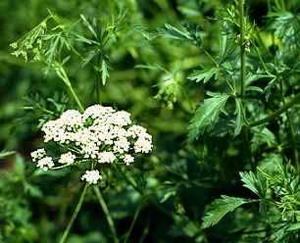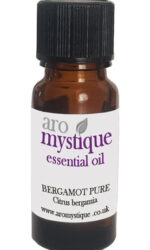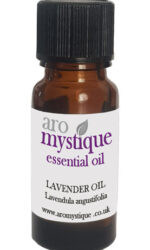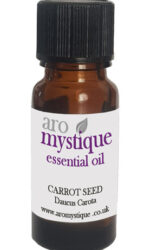Description
Details
Common Name: Anise, Anise Seed, Aniseed
Latin Binomial: Pimpinella anisum
Family: Apiaceae (Umbelliferae)
Other Common Names: Anisum officinalis, Anisum vulgare
Part Used: Seeds, dried and crushed.
Production Method: Steam distillation.
Countries of Origin: Native to the eastern Mediterranean region and Southwest Asia. Poland and Russia are among the largest producers
of Aniseed oil from locally grown fruits.
Typical Constituents: a-pinene (0.17%), camphene (0.07%), b-pinene (0.01%), linalool (0.18%), cis-anethole (2.29%), trans-anethole (85%), safrole (0.58%), anisaldehyde (0.91%), acetoanisole (0.94%).
Description of Oil: Clear to pale yellow. Intense, spicy, sweet scent similar to fennel.
Description of Plant: An herbaceous annual grows to about 1 meter, with delicate leaves and white flowers.
History, Folklore and Myth: Anise seeds were a highly-prized commodity in ancient Egypt, Greece and Rome. The Greeks used the seeds for the treatment of coughs, colds and even bad dreams. The essential oils has long been used for the treatment of dry, irritable coughs, bronchitis and whooping cough.
Aniseed tea was used for infant catarrh, flatulence, colic and griping pain. In Turkey, a popular alcoholic drink is made from the seeds. In Tibetan medicine, a blend of aniseed and nutmeg oil is used in a lotion for anxiety, depression and other neurotic symptoms.
Properties and Uses: Antiseptic, antispasmodic, carminative, diuretic, expectorant, galactagogue, stimulant, stomachic. To clear the head and strengthen the nerves, a few drops may be used in a vaporizer. Use up to 5 drops in s bath for nervous headaches, anxiety, stress, insomnia and general exhaustion.
Aniseed oil may be used to relieve dyspepsia, colic and flatulence. For a soothing massage to relieve digestive problems, blend with the antispasmodic properties of peppermint and nutmeg.
Aniseed oil is also recommended for nauseous migraines, palpitations of the heart and any breathing difficulty due to bronchial spasms.
Aniseed blends well with bay, cedarwood, eucalyptus, dill, fennel, ginger, mandarin, petitgrain, peppermint, rosemary and spearmint.
Precautions and Contraindications:Tested non-toxic at low levels. Should not be used when pregnant, breastfeeding or by children. Possible skin irritant, sensitizing.
The major constituent of aniseed oil, trans-anethole, is known to cause dermatitis in some individuals, so avoid in allergic and inflammatory skin conditions. Also, due to the oestrogen-like action of trans-anethole one should avoid aniseed oil during pregnancy and with endometriosis or oestrogen-dependant cancers.
Other Interesting Information: Below 59° F aniseed oil will begin to congeal to a crystalline mass which begins to melt above that temperature and completely liquefies at around 64 to 68° F.
One should note the difference between Chinese Star Anise (Illicium verum) and Anise (Pimpinella anisum) which Guenther describes as having a finer and more delicate flavour. The inferior Star Anise is often used to adulterate Pimpinella anisum.






Reviews
There are no reviews yet.